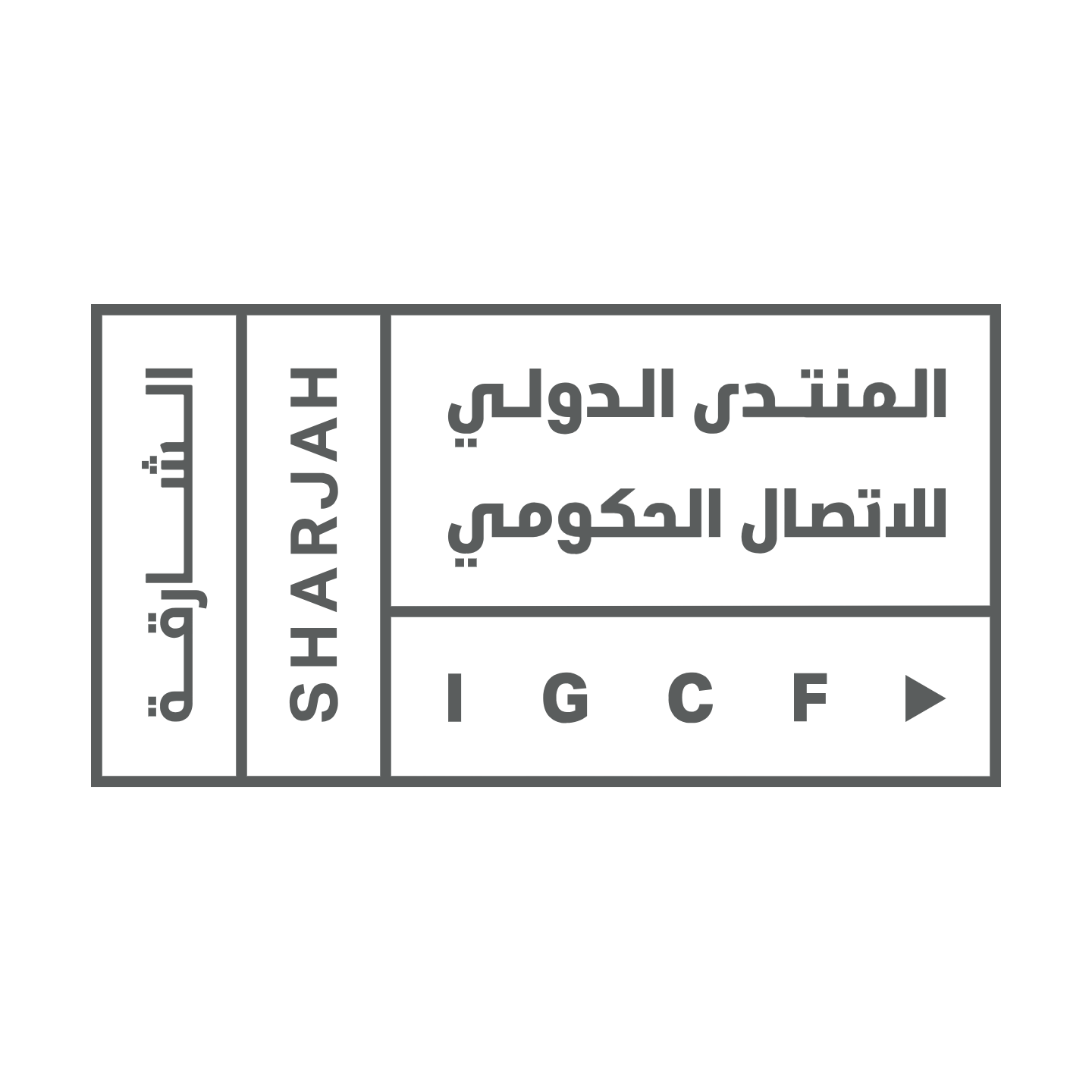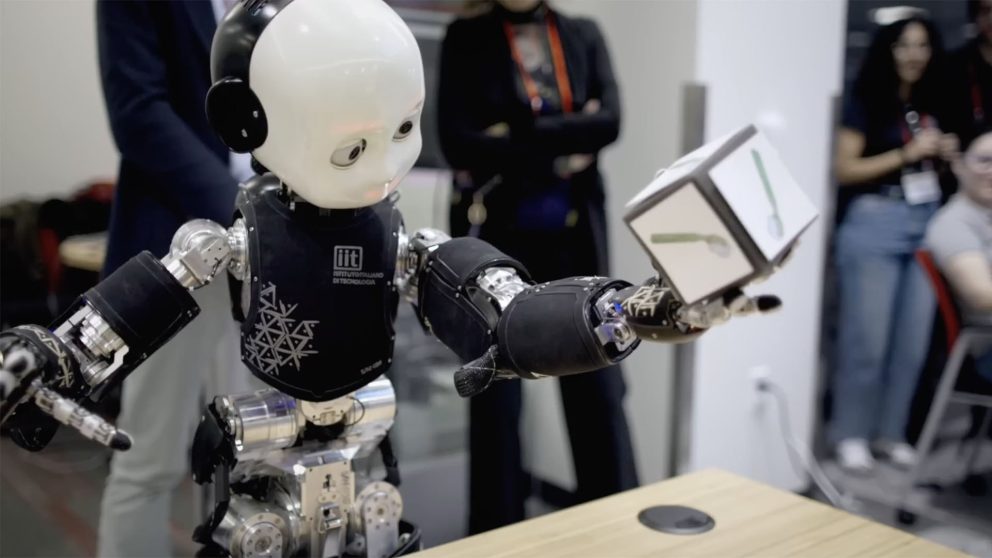
UAE/Sharjah: Living good in a greener economy
LEAD IN
How to eat healthy, from secured sources, using AI and technology to produce sustainably and equally accessible.
More than 200 innovators, academics and government officials discuss the “knowledge to action” for a better quality of life at Sharjah’s International Government Communication Forum
STORYLINE
Enabling robots to interact cooperatively and safely with humans and the physical world. That’s the focus of Director Oussama Khatib and his team at the Robotics Laboratory of California’s Stanford University. It brings together cross-disciplinary researchers and industrial affiliates with a shared vision of robotics' future.
The most famous example is “OceanOne”, a humanoid robot for deep-sea exploration. Because of its design it’s easy and intuitive for a human to remotely perform delicate archaeological tasks through a telepresence interface. But the research doesn’t stop underwater, says Oussama Khatib, Director of the Stanford Robotics Lab during IGCF. Where he discussed how robotics is transforming the boundaries of human capability.
“For medical application, we are going to enable doctors to reach in villages and intervene with the patient, not only by talking to them or looking at their images, but really by doing physical examination. By doing scanning, ultrasound imaging, because we are connecting the doctor to a machine and the machine is touching. And this scanning is done by understanding how to touch and how to rotate the sensors. All of that is becoming possible by this synergy between the machine and the human. Ultimately, there is a synergy. The synergy, it's a synergy means... It's more than the sum. And this is what is being created using this connection between human and robots.”
At “Poseidon-AI” the power of IoT (internet of things) and AI are used to help sustainably develop aquafarming in Southeast Asia and China.
The IoT device monitors the water condition. The data goes to an AI powered cloud system. The algorithms tell the farmers how much they have to feed at what time
They also use the trained algorithm to support vulnerable and indigenous communities in Latin America and Africa. The “integrated aquaculture system” collects 500 liters of rainwater, uses clay tiles in a set of soil and AI as an expert. It can produce 80 kilos of seafood and 20 kilos of vegetables in one year.
Poseidon AI applied this system in one indigenous community in Cost Rica. Their water and soil were heavily polluted by fertilizer pesticides from big pineapple farms nearby.
“We need different players to be involved, such as local governments, the private sector, NGOs and international organization and so on”, explains Amaj Rahimi-Midani, CEO of Poseidon-AI. “So, I'm my main goal right now is to make sure that the AI can be the link between all these players as an expert so that instead of me spending so much time going around and making some “being on the same page”, AI be the link that all of us can join forces together. And AI can easily be sent to all these industrial farms around the world, whether it's in Vietnam or in Chile,
we can always have AI to help us have a better environment, have sustainable farming and make also money.”
In Malawi, William Kamkwamba takes a similar approach. His “Moving Windmills Project” builds community hubs that are being equipped with solar systems for consistent energy, wells for clean water access and educational technology.
The type of infrastructure that he himself built from scratch as a teenager: When William was 14, the country suffered a severe famine. Working from just one photo in a U.S. junior high school textbook, he reasoned out how to build an electricity-producing windmill from spare parts and scrap, despite having no instructions. William’s inspiring story is told in his New York Times bestselling memoir “The Boy Who Harnessed the Wind”, and in the Netflix film adaptation, directed by Chiwetel Ejiofor.
His efforts to improve the quality of life of around 28 thousand Malawians have been recognized at Sharjah’s International Government Communication Forum.
“I've been able to communicate with people from all over the world telling me that they have been inspired by my story and sometimes I get an email from somebody I've never met that I'm just graduating with my engineering degrees. I was inspired by your work. So that has changed and also”, says William Kamkwamba. “Because of that, I've been able to travel around the world, interacting with people that are doing different things. And I'm learning from them taking it back to my community in Malawi, trying to solve some of the problems that people are facing. Right now we are focusing on building innovation centers, space for young people to come to design solutions to everyday’s challenges.”
And thereby improve people’s “Quality of life” which was this year's IGCF theme: academics, innovators and government officials discussed challenges in health, education, sustainability and food security.
One ecosystem that supports the collaboration of these stakeholders can be found at the Sharjah Research, Technology, and Innovation Park Free Zone (SRTIP). It focuses on water management, renewable energy, environmental technology, transport and logistics, digitalization and smart manufacturing.
STRIP has also partnered with the International Committee of the Red Cross to establish the first Energy and Water Knowledge Hub in the MENA region, aiming to find innovative solutions for pressing humanitarian challenges.
The number of forcibly displaced people globally has reached 122 million. Experts at IGCF, as Khaled Kabbara, Communications Officer at UNHCR, were calling for tech-driven initiatives and expanded partnerships with the private sector that meet immediate needs.
“The solutions can be providing opportunities. And these opportunities would be to enable them to thrive, to rely on themselves through technical skills, access to livelihood, also access to education, and other areas such as durable solutions.”
Access to health education is also the core driver of Dr. Karan Rajan, a surgeon and one of the biggest health and science creators on social media. He is a regular advocate for health promotion on behalf of the NHS and the UK government, and has also worked closely with the UN, WHO, and British Red Cross.
“There's an overwhelming amount of information which can make it confusing and overwhelming for people to decide what's true, what's not true. Because the same person who says fiber is good for health, there's another person saying it's bad for your health. Or that tomatoes are bad, or tomatoes are good. So people find it hard to know what's the truth. So, I think it is easier for experts to talk about things and reach a large audience.”
Since 2020, he has gained over 9 million followers on his channels, where he debunks medical myths and gives advice on general health.
SHOTLIST
Source: ENEX and external footage. No restrictions Location: Sharjah/UAE
Date Shot: 10 & 11 September 2025
- Footage from Stanford Robotics Center. No restrictions. Must credit: from Stanford Robotics Center
- Various of IGCF exhibition hall / source: ENEX
- SOT Oussama Khatib/ Director of the Stanford Robotics Lab (english)
“For medical application, we are going to enable doctors to reach in villages and intervene with the patient, not only by talking to them or looking at their images, but really by doing physical examination. By doing scanning, ultrasound imaging, because we are connecting the doctor to a machine and the machine is touching. And this scanning is done by understanding how to touch and how to rotate the sensors. All of that is becoming possible by this synergy between the machine and the human. Ultimately, there is a synergy. The synergy, it's a synergy means... It's more than the sum. And this is what is being created using this connection between human and robots.”
- animation from Poeidon-AI. No restrictions. Must credit: Poseidon-AI
- footage from Poeidon-AI project in Costa Rica. No restrictions. Must credit: Poseidon-AI
- SOT Amaj Rahimi-Midani/ CEO of Poseidon-AI (english)
“We need different players to be involved, such as local governments, the private sector, NGOs and international organization and so on. So, I'm my main goal right now is to make sure that the AI can be the link between all these players as an expert so that instead of me spending so much time going around and making some “being on the same page”, AI be the link that all of us can join forces together. And AI can easily be sent to all these industrial farms around the world, whether it's in Vietnam or in Chile, we can always have AI to help us have a better environment, have sustainable farming and make also money.”
- Footage from “Moving Windmills Project”. No restrictions. Must credit: “Moving Windmills Project”
- SOT William Kamkwamba/ Malawian inventor and environmental scientist (english)
“I've been able to communicate with people from all over the world telling me that they have been inspired by my story and sometimes I get an email from somebody I've never met that I'm just graduating with my engineering degrees. I was inspired by your work. So that has changed and also...Because of that, I've been able to travel around the world, interacting with people that are doing different things. And I'm learning from them taking it back to my community in Malawi, trying to solve some of the problems that people are facing. Right now, we are focusing on building innovation centers, space for young people to come to design solutions to everyday’s challenges.”
- Various of IGCF exhibition hall / source: ENEX
- Footage from Sharjah Research Technology & Innovation Park. No restrictions.
- FILE B-roll of internally displaced people in Sudan. No restrictions. Must credit: UNHCR
- Khaled Kabbara / Communications Officer at UNHCR (english)
“The solutions can be providing opportunities. And these opportunities would be to enable them to thrive, to rely on themselves through technical skills, access to livelihood, also access to education, and other areas such as durable solutions.”
13. TikTok videos of Dr. Karan Rajan. No restrictions. Must credit: TikTok/Dr Karan Rajan 14. SOT Dr. Karan Rajan/ Surgeon and health and science creator (english)
“There's an overwhelming amount of information which can make it confusing and overwhelming for people to decide what's true, what's not true. Because the same person who says fiber is good for health, there's another person saying it's bad for your health. Or that tomatoes are bad, or tomatoes are good. So, people find it hard to know what's the truth. So, I think it is easier for experts to talk about things and reach a large audience.”
15. TikTok videos of Dr. Karan Rajan. No restrictions. Must credit: TikTok/Dr Karan Rajan
